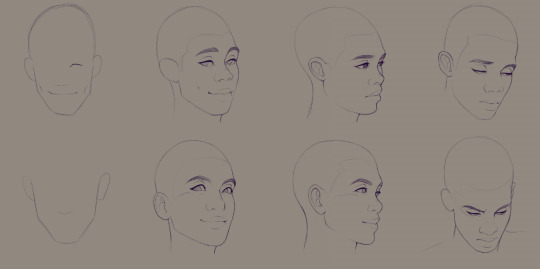#also 3d models might also be helpful if you need help with anatomy! csp has a 3d model feature !!!
Note
art knowledge. hand it over. 🫴
/hj but fr im trying to get back into art, do you have any like. resources you'd recommend
hello!!!!!!! i don't use many resources but
line of action - gesture drawing
proko - fundamentals
not a resource but i think doing studies of art that you like is good too!
have fun!!!!! i backflip into the swamp and become bread
#as warm ups i like to draw cursed images to loosen my hand. doing warmups are always good!! just draw Whatever#i hope you continue to enjoy art !!!!! it is hard sometimes#for art style i just look at art i like and then pick and choose the parts i like. and copy#also 3d models might also be helpful if you need help with anatomy! csp has a 3d model feature !!!#i am sorry. my head is empty bc i don't really use any particular resources#but anyway the most important thing is that you're having fun!!#take a break if you're finding it stressful#have a great day!!!!!!!!!!!!!!!!!!!#anon#ask
24 notes
·
View notes
Note
Hoi! QwQ I was wondering.. where did you learn your art skills from? QoQ Human anatomy, angles, etc.
Hiya!
I’ve been drawing my surroundings (people, objects, etc) since grade school, which served as a foundation for learning how to observe and measure things in a drawing sense.
Human anatomy is tricky! I had a figure drawing class in college, but I feel as if it was mostly just putting the above skills into repetitive practice. When it comes to building up knowledge of human anatomy, reference is key!
Posemaniacs is something I use occasionally- it’s nice in that it shows muscle placement: http://www.posemaniacs.com/
Figurosity has models of different sizes and lots of poses at different angles: https://figurosity.com/
SenshiStock has varied models and even more varied poses, and they’re of real people: https://www.deviantart.com/senshistock
DesignDoll is for posing 3D models, which is helpful if you’re having trouble with measuring proportions for a certain pose, though the anatomy of it can potentially be very wonky: https://terawell.net/terawell/?lang=en
Manga Materials goes into specific parts of human anatomy to tips on learning effectively: https://www.youtube.com/channel/UCnx8zKs3c3yeFPYQ2QzMqLA
What has also helped is studying photos. I love drawing people more than anything else in the world, but I still feel like in the beginning stages of sketching I’m doing a whole lot of flailing around trying to find the correct placement of things as well as keep character faces consistent. So in my free time, I’ve been finding photo reference of different head angles of the same people, overlaying a drawing layer over them, and tracing over the different planes of the face to try and understand them better.
This has also doubled as a personal reference for drawing these face angles on the fly, or for drawing RP characters in a way that deviates from their “faceclaims”, too, which is pretty nice.

(As you can see I only got so far. I don’t have that much free time between commissions, haha)
Ethan Becker explains this way of studying faces a little better and probably does this in practice a lot better here: https://www.youtube.com/watch?v=mZhUHNqLOUg
If all of the above fails in finding the right reference for whatever it is I’m looking for, I usually resort to acting out a pose myself and letting a webcam continuously take pictures until I capture what I need.

Just recently I needed to know what someone’s hands looked like braiding a very thick braid for a commission, so I now have a lot of pictures like this of me braiding scarves together, and it helped immensely! It can feel very goofy to pose these things out if you’re not used to it, and if you use something better than a webcam this might be more useful in studying details like fingers and facial features, but I still find this to be a very useful tool.
As far as using art programs goes, there’s a tutorial for nearly anything out here in the internet! The more you know about what a program is capable of doing, the more solutions you can come up with on your own to solve any problem you might need to solve.
PiXimperfect has a lot of videos on Photoshop in particular and is focused on photography and compositing, but I’ve found some things to be applicable to illustration as well: https://www.youtube.com/channel/UCMrvLMUITAImCHMOhX88PYQ
Clip Studio Paint Artist comes out with helpful tips in CSP pretty often: https://twitter.com/clipstudiotips?lang=en
But that’s pretty much where I can say my skills have come from! Observing, studying, referencing, pawing through online resources, and then doing it all again and again.
40 notes
·
View notes